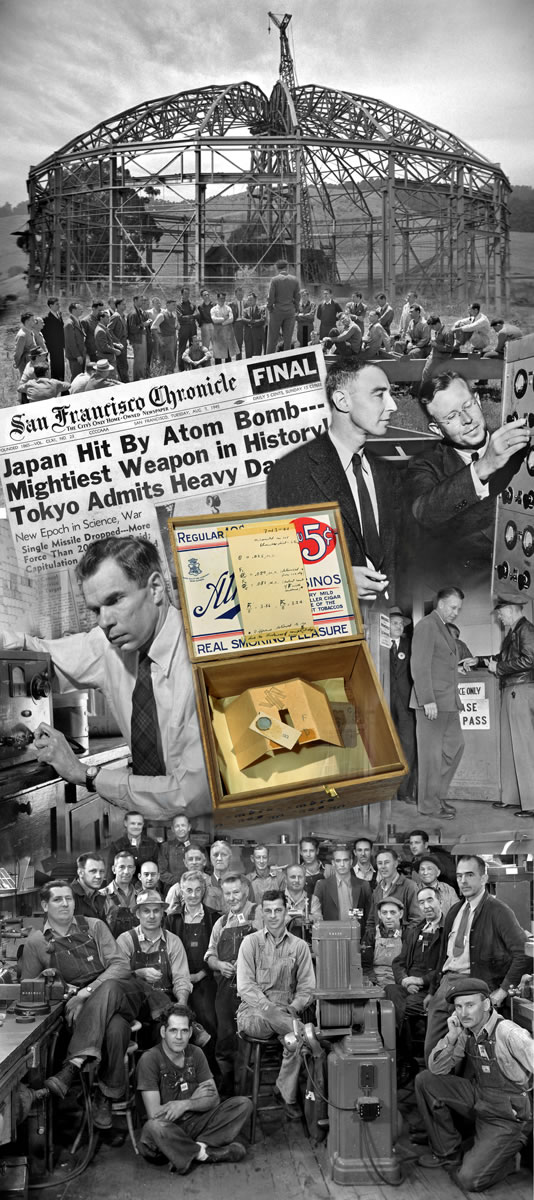
Images from Eight Decades: the 1940s
| Previous | Home | Next |
 |
Lawrence’s 184 Inch Cyclotron was too large for the UC Berkeley campus and had to be built at a site in the hills above, which became the Rad Lab’s new (and current) location. When the United States was thrust into World War II, Lawrence mobilized the Rad Lab staff and joined Robert Oppenheimer and other scientific leaders on the Manhattan Project. Uranium for the first atomic bomb was processed through a type of cyclotron called a calutron, and the second bomb was made from plutonium, an element discovered by the Rad Lab’s Glenn Seaborg. |